
The Keystone B-5 is a light bomber made by the Keystone Aircraft company for the United States Army Air Corps in the early 1930s. The B-5A was a Keystone B-3A with Wright Cyclone rather than Pratt & Whitney engines.
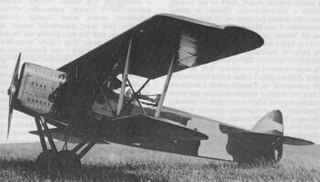
The Aero A.11 was a biplane light bomber and reconnaissance aircraft built in Czechoslovakia between the First and Second World Wars. It formed the basis for many other Czechoslovakian military aircraft of the inter-war period. Around 250 were built, with some remaining in service at the outbreak of World War II.

The Aero A.12 was a Czechoslovakian biplane light bomber and military reconnaissance aircraft manufactured in small numbers shortly after World War I. Although reminiscent of the Hansa-Brandenburg-designed aircraft that Aero was building during the war under licence as the Ae.10, the A.12 was the company's own design. It is perhaps most significant as the direct descendant of the highly successful A.11 and its various derivatives. An example of the type is preserved at the Letecké Muzeum in Kbely.
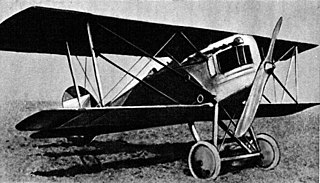
The Aero A.18 was a biplane fighter aircraft built in Czechoslovakia in the 1920s. It was a development of the Ae 02 and Ae 04 fighters Aero had designed during World War I, but also borrowed from the more recent A.11 reconnaissance-bomber design.
The Aero A.25 was a biplane military trainer aircraft developed in Czechoslovakia from the Aero A.11 reconnaissance-bomber and generally similar to the Aero A.21 night trainer.

The Aero A.29 was a military biplane developed in Czechoslovakia from the ubiquitous Aero A.11 reconnaissance-bomber. Aero equipped it with floats and it served as a target tug for training anti-aircraft gunners.
The Aero A.26 was a Czechoslovakian military reconnaissance biplane aircraft built by Aero Vodochody in the 1920s. It was Aero's last design to be based on the Hansa-Brandenburg B.I aircraft that the company had been building under licence during World War I as the Ae.10.
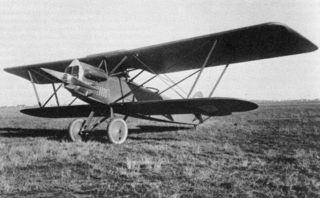
The Aero A.30 was a biplane light bomber and reconnaissance aircraft built in Czechoslovakia in the late 1920s. It originated as an attempt by Aero to improve the performance of the Aero A.11, but soon evolved into quite a different aircraft, larger and more powerful than its predecessor. The aircraft is readily distinguished from other related types by the difference in spans between its wings – the upper set being of much greater span than the lower.

The Aero A.34 Kos was a small sports and touring biplane built in Czechoslovakia in the 1930s.

The Aero A.35 was a Czechoslovakian airliner of the 1920s and 1930s. Designed by Aero for long-range flight, with a transatlantic crossing in mind, it saw service with CSA although no such crossing was ever attempted. A conventional high-wing monoplane, it was a very modern design for its day in all but one respect – the cockpit still had open sides. An extra passenger could also be accommodated here, beside the pilot.

The Aero A.38 was a Czechoslovakian biplane airliner of the 1920s and 1930s. Following the relatively modern A.35, this aircraft was something of a throwback, marrying a fuselage derived from the A.35 to wings copied from the A.23. A few served with CSA, and others with French airline Compagnie Internationale de Navigation Aérienne. These latter aircraft were powered by a French Gnome-Rhône engine instead.

The Aero A.100 was a biplane light bomber and reconnaissance aircraft built in Czechoslovakia during the 1930s. It was the final step in a design lineage that extended back to the Aero A.11 a decade earlier. A.100s remained in service throughout World War II and for a few years postwar.
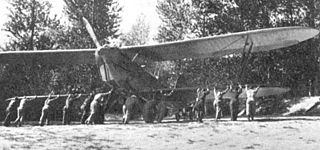
The Aero A.101 was a biplane light bomber and reconnaissance aircraft built in Czechoslovakia during the 1930s.

The Avro Club Cadet was a 1930s single-engined British biplane trainer aircraft, designed and built by Avro as a development of the earlier Cadet. It was planned for private and club use and, unlike the Cadet, was fitted with folding wings.

The International F-17 Sportsman was a 1920s American three-seat open-cockpit biplane designed and manufactured by the International Aircraft Corporation in Long Beach, California and Cincinnati, Ohio. 107 aircraft were built, 77 of them at Cincinnati.

The Handley Page Hanley was a British torpedo bomber aircraft of the 1920s. A single-engine, single-seat biplane intended to operate from the Royal Navy's aircraft carriers, it was not successful, with only three aircraft being built.
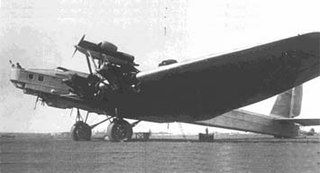
The Tupolev ANT-16 was an experimental heavy bomber aircraft designed and tested in the Soviet Union in the early 1930s.
The Airdrome Dream Classic is a minimalist, high wing, single seat, single engine ultralight aircraft inspired by the 1908 Santos-Dumont Demoiselle and produced in kit form by Airdrome Aeroplanes of Holden, Missouri.
The Fisher Horizon is a family of Canadian two-seats-in-tandem, conventional landing gear, single-engined, high-wing monoplane kit aircraft designed for construction by amateur builders. The Horizon 1 was inspired by the Aeronca Champion and its later version, the Bellanca Citabria, while the Horizon 2 was inspired by the Cessna O-1 Bird Dog.

The Aero East Europe Sila is a family of Serbian ultralight and light aircraft, designed and produced by Aero East Europe of Kraljevo and later of Jagodina, introduced at the AERO Friedrichshafen show in 2013. The design is supplied complete and ready-to-fly.















